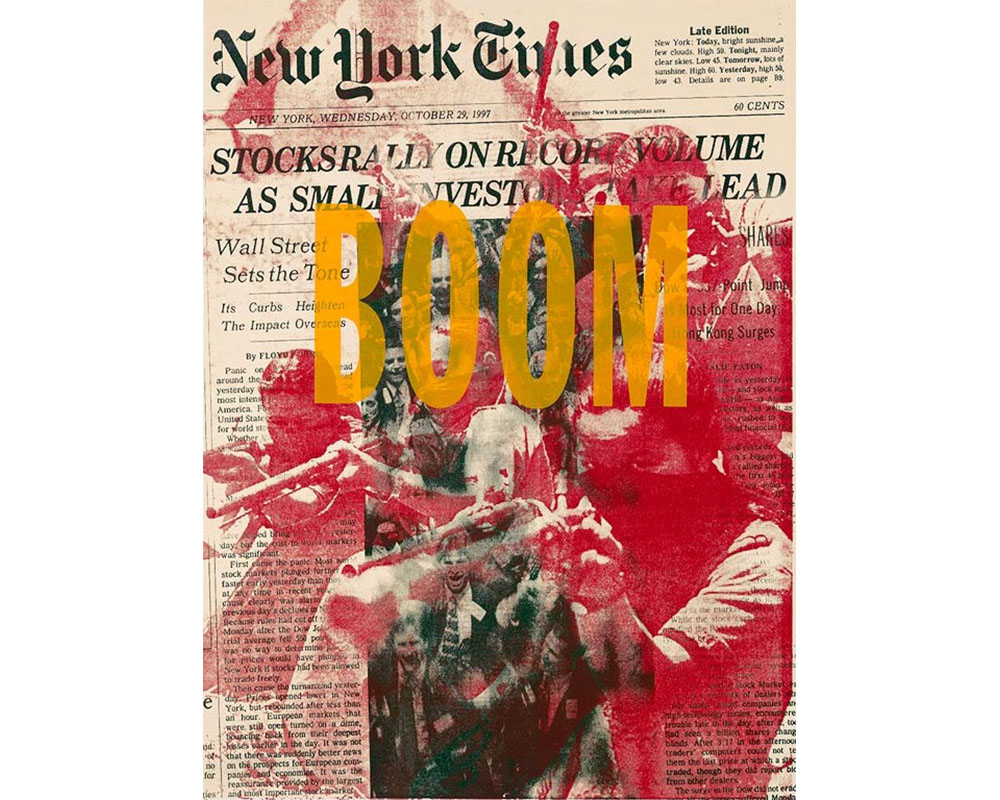
Boom BOOM! by Dread Scott
This post is written by Julie Bomba ’11. Julie assisted in the acquisition of “Boom BOOM!” for the SCMA collection as part of the January Term class Collecting 101. To read more on Collecting 101, click here.
Art isn’t always going to make you feel comfortable; in fact, most of the greatest masterpieces have been the cause of upheaval and revolution. Some have posed questions about the very foundation of institutions, crumbing their credibility and authority. Other artworks, with stubborn one-sided opinions and relentless messages, have created a different kind of discomfort. Dread Scott’s Boom BOOM! demonstrates both kinds of discomfort.
The print is propaganda in its true definition, “the spreading of ideas, information, or rumor for the purpose of helping or injuring an institution, a cause, or a person.”* This is a word that has extremely negative connotations, bringing fascism and other horrific regimes to mind, but in reality we are surrounded by it daily, whether it be a governmental campaign, religious billboard, or even a commercial for diet pills. Furthermore, the most compelling contemporary art has critiqued museums, modernism, society, homophobia, and the gender binary.
Scott’s artwork is in-your-face with its anger and unmistakably leftist views: he juxtaposes images of a booming stock market with its indirect consequence, violent revolution in Nepal. What are these women fighting for? And what does capitalism have to do with it? The answer divides many, for challenging the capitalist institution is seen as clichéd and unpatriotic among most while essential for progress among others. Although Scott is asserting his opinion with this print, you don’t have to agree with him to appreciate it.
Whether or not the message resonates with you is irrelevant—its merit is in the fact that you cannot help but talk about it. Picking this print to propose for the J-term class Collecting 101 was a risk; my group knew the work’s political leanings were unpopular and unforgiving. Yet, we saw in it great potential for dialogue as well as a historical presence, which has become even more relevant considering what is happening in Egypt, Tunisia, and in the Middle East. Scott’s print is more than just propaganda —it is a historic document recording the current political climate, which now can be remembered and studied by fellow and future Smithies.
* Merriam-Webster Dictionary, 2010.